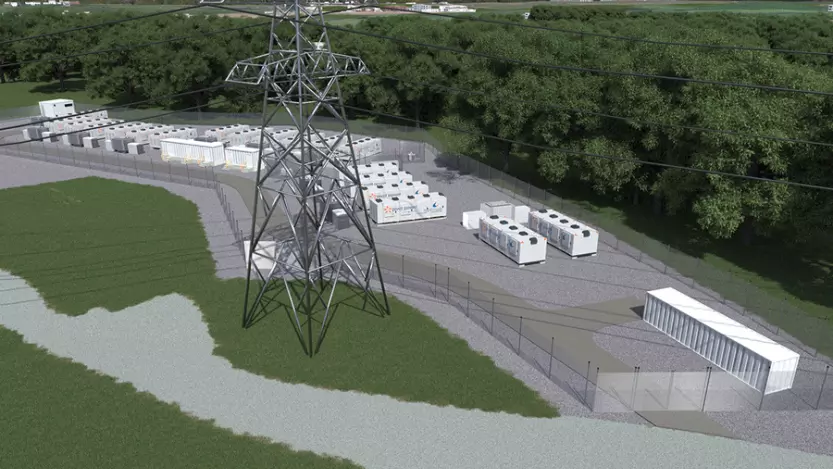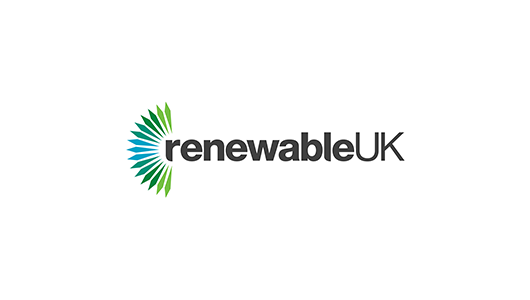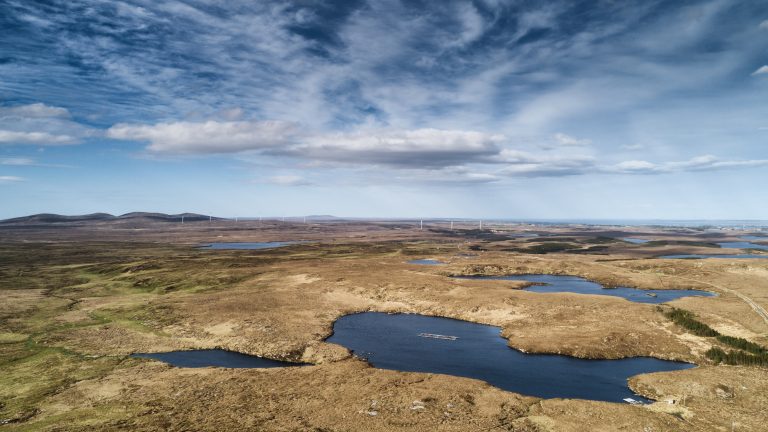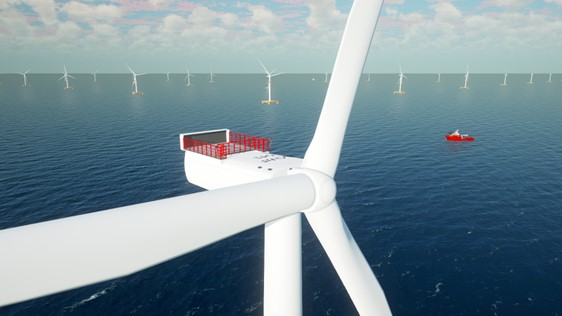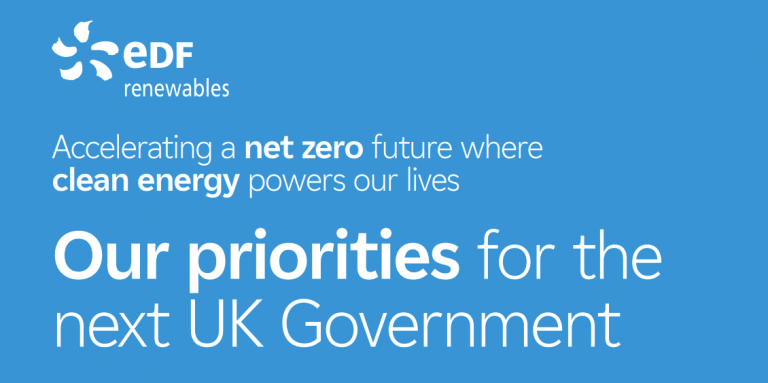
Unless you work in the nascent energy storage industry, the chances are you won’t have heard the words ‘portfolio optimisation’ or, even ‘energy superhub’ before. Yet these two phrases are integral to the role of Bharath Kantharaj at Pivot Power. Read the Q&A to find out what his role as Portfolio Optimisation Manager involves. And how he managed to break into the industry, despite experiencing a knockback right at the start of his career.
Day-to-day working life in renewables
Q. Where are you right now?
A. I’m currently working from home in Beckenham, Kent. Prior to the Covid-19 pandemic, I was based in EDF Renewables’ London office. I plan to return at some point, but maybe spend half my time there and half working from home, as we’ve proven over the last 18 months that we can effectively work from home.
Q. What does your role as Portfolio Optimisation Manager involve?
A. Well, that’s not entirely straightforward to answer, as it’s a new role for me and the company! But, essentially, it’s a combination of what I did in my previous role in Strategy and Analysis at EDF Renewables, and a bunch of new things.
How I see it is that I have two main tasks in my new job:
My first responsibility is to help prepare the investment cases for each of the projects we have in the pipeline. These are sites that combine transmission-connected batteries – to provide flexibility to the grid so more renewables can be integrated – with high volume power connections. These power connections provide the infrastructure for large numbers of electric vehicles (EVs) to be charged quickly, to avoid putting pressure on the local distribution network.
We have 40 sites earmarked, with Energy Superhub Oxford being the first to go live. I help with the economics part of the business case. So, I look at the possible revenue we can get from storage and EV charging hubs; or how we can optimise returns from one project. And then I balance these elements against considerations on costs and other factors – like land planning and proximity to the grid.
The second part of my role is to support the asset operations team when a site becomes operational. So after a site is built and running, how do we operate our assets so they perform effectively? This involves working with our operations team and traders to build an internal toolkit that monitors performance and tracks how we’re best using assets. So we can check that whatever scenarios we modelled in our development of the investment case is representative of what’s happening in reality once the site’s live. This will influence how we model and develop future projects too.
Q. What’s a typical day like for you?
A. As the vast majority of our projects are still in the development phase, up to 80% of my time is currently spent on the first part of my job: developing investment cases for our projects.
On a day-to-day level, this means talking to lots of people, as it’s a truly interdisciplinary effort putting together the economic case. I need to understand the technology we might invest in, the costs of a project, how it’ll be built and any other requirements needed on site. Then I start to work with economists about what fundamental changes are required to the electricity system now and into the future. This gives us an idea of the opportunities and risks, and what we call ‘market signals’.
Then, all these elements are fed into a set of modelling tools – which we worked with R&D to create – to give us some estimations of the future earnings a site can make. This information is then included in our valuation model, which gives us an idea of how investment-worthy a site is.
Developing a career in the renewables industry
Q. How did you begin your career in renewables?
A. By background, I’m a Mechanical Engineer. I did a PhD in energy storage and I first started working with EDF in their R&D team as an intern, in 2016.
At the time, EDF was the only company advertising roles involving energy storage economics! They’d already invested in their first energy storage unit at West Burton B. And they were considering what future projects would look like. I helped the team to build a set of algorithms that valued projects combining energy storage and onshore wind. So we were looking at things like, how will coupling the two assets make money? Where will the investment come from? And so on.
I really enjoyed the experience and it made me want to work in renewables. So after I finished the internship, I completed my PhD and applied for a job in Strategy and Analysis at EDF Renewables … but I didn’t get it!
The two people that interviewed me, however, gave me really good feedback. So I spent some time working on those elements of the interview that didn’t go so well. 10 months later, I applied again to work in the Strategy and Analysis at EDF Renewables and… this time I got the job.
Q. Did you always want to work in renewables?
A. I knew from when I first worked with EDF’s R&D team in 2016 that I wanted to work in renewables. The industry has seen such rapid growth and now, within EDF Renewables, we have a whole business division dedicated to energy storage.
Q. When did you start working with the Pivot Power team?
A. In November 2019, EDF Renewables acquired Pivot Power. I was fortunate enough to be a core part of the valuation team at EDF Renewables and as part of the deep dive we did into the business, I really got to understand Pivot Power’s business model. So when they needed people to come and work on the vast amount of projects they have in their pipeline, it was a natural transition for me to move over, in August 2020.
At EDF Renewables, I was an Analyst, whereas now I’m more of a Project Manager at Pivot Power. I really enjoy the mix of talking to those on the modelling side – looking into the far future to predict what’s going to happen – and those who work on the ground, which involves the procurement of technology, building of the site and so on.
Diversity and inclusion in the renewables sector
Q. Do you think the industry could do more to promote diversity and inclusion?
A. I’ve not had much experience, having gone straight from university into EDF Renewables. But, anecdotally, I’ve seen more women come into the industry over the last few years. EDF Renewables is also one of the better places for ethnic diversity, as there are so many people here from different countries. I had five people speaking different languages sat around me the other day, which is a really encouraging sign. But there’s no denying that there’s always more we could and should be doing – both as a company and as a society.
Love what you do; do what you love
Q. What’s your favourite part of your job?
A. My favourite is probably the freedom I get in my role. And the fact I’ve been fortunate to see energy storage grow from nothing into a new, hot technology. When I started my PhD in 2013, the UK Government named energy storage as one of the UK’s eight great technologies that we could become a leader in. So I definitely joined the sector at the right time! And this newness gives you a real freedom to innovate and experiment in your job, which are the things I most enjoy.
Q. And what’s your least favourite part of the job?
A. Digital clutter! Instant message traffic, email traffic, endless video calls… There’s been more of it due to the Covid-19 pandemic, but the upshot is it’s forced me to be more focused on what digital tools I use and when I use them. So, now, I assign time locks when I open Microsoft Outlook or Teams. I used to open both first thing, but I don’t do that now unless I need to. It saves me from getting distracted.
Q. Do you miss the academic world?
A. I miss being in a space where there are no real time constraints to achieve your goals. At university, you’re mainly working for yourself. It’s a different environment. But being an engineer, I really wanted to see the commercial side of things. So, what it takes to put a project into place, which I only modelled on my computer previously. Building an investment case for a new technology like energy storage is really difficult, as it’s so new. But I really enjoy this challenge – and I wouldn’t have been able to experience this if I’d stayed at university.
The future role of renewables
Q. What impact has the Covid-19 pandemic had on the industry?
A. For the renewables industry, in particular, there have been green shoots and opportunities everywhere with the UK Government’s green recovery plan and the Prime Minister’s 10-point plan. So it’s a great time to be working for a company like EDF Renewables.
But, what the pandemic also showed us is that it’s difficult to manage the grid. We’re not at a high penetration of renewables yet, but the suppression of demand during the pandemic – compared to normal times – showed how difficult a future scenario like this might be for the grid to manage. It highlighted the need for energy storage so we can quickly add scale, and this has increased appetite from our investors.
Q. How is your role helping the UK accelerate to a net zero future?
A. The simplest answer is that I’m contributing to EDF Renewables’ plan to build more storage projects. To keep the grid stable and integrate more renewables, you need a supporting set of technologies – and energy storage is the most proven of them at scale.
Q. Which areas of innovation in your industry are you most excited about?
A. Longer duration storage: technologies that can store energy for significantly longer timeframes than the ones we’re deploying in the market now. Our projects are one hour at Cowley and Kemsley. And our next two projects are going to have batteries that are two hours in duration – and they earn revenue in slightly different ways to short duration batteries.
The rationale is you’ve got more uncertainty and variability in the system with more renewables supplying electricity. So you need to balance out energy over longer time frames. Therefore, the more energy you can store – and for longer – the better.
Also, the kind of technologies we invest in now might not be right for future scenarios for the grid. There is a lot of innovation taking place in this area and I’m really interested in questions like, how do you alter the engineering design to make the technologies the best they can be? How do you tie them back into economics so that they make a good investment?
There are other areas of innovation too – for instance, how do you finance revenue streams for storage? At the moment, we fully fund projects. Investors aren’t always comfortable with how they can make money through storage right now, because the markets for storage aren’t as liquid as they are for other generation technologies and are at risk of regulatory changes.
Over time I think there’ll be innovation in financing revenue streams for storage. Perhaps, in future, investors might group together and finance projects differently. It depends on investors knowing how a project will make money and whether there’s certainty about how much they can make.
Q. What would you say to one of your children if they were interested in a career in renewables?
A. I would absolutely recommend it. The market is going to grow significantly and we’ll need the best minds with varied skillsets to work in this industry. There’ll be ample opportunities for future generations, like my son. It’s hugely exciting.


